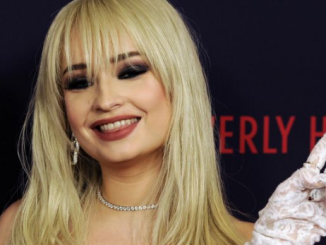
2023 was supposed to be a golden year for Disney, with the corporation celebrating its centenary. Instead, the company finds itself on the defense against a squall of failures.
To be fair, this is not the first time Disney has been in trouble. After WWII, Walt Disney had to practically rebuild the studio from scratch since, during the war, its focus had been realigned to war-time products. Then 1970 to 1988 was the company’s second “dark age,” a time of wild experimentation as the ship drifted after Walt’s death.
However, the company bounced back stronger both times with “Cinderella” in 1950 and “The Little Mermaid” in 1989. The Disney Renaissance unfolded over the next decade. More importantly, the products created during these slouch periods, in hindsight, still feel like Disney. Some are insipid (“The Fox and the Hound”), some explore the dark side of childhood (“The Black Hole,” “Something Wicked This Way Comes”), but there are still elements of that hard-to-describe Disney magic in them.
Box Office Bloodbaths
The company’s current troubles are much worse than a few box-office disappointments. They’re more like box-office bloodbaths. To give just a few examples: Last year’s “Strange World” lost Disney $200 million, becoming the biggest flop of 2022. This year’s “Elemental” and most recent release, “Wish,” are following in its footsteps.
{snip}
And it is not just the case of a few massive misfires. What were supposed to be sure money-printing franchises have dried up. The Marvel Cinematic Universe (MCU), which Disney bought in 2009, used to be one of the goliaths of Tinsel Town, with the last Avengers movie, “Endgame,” taking in close to $3 billion worldwide. The latest MCU movie, “The Marvels,” sequel to 2019’s billion-dollar winner, “Captain Marvel,” is becoming one of the biggest flops — not in Disney history or recent history, but of all time: On a reported budget of $275 million, it has made less than $200 million worldwide. Here in the States, it hasn’t even crossed the $100 million mark.
The MCU on Disney-Plus is dying the same death; “Secret Invasion” pulled in less than a million viewers, and it seems now that “She-Hulk: Attorney at Law” will not be getting a second season. The same thing is happening to Star Wars. Disney’s purchase of Lucasfilm, so brilliant in 2012, has become yet another headache for the company, with a despised sequel trilogy that made no sense and a wheelbarrow of Disney-Plus shows that cannot draw an audience to save their lives.
Even Disney’s live-action remakes — three of which made more than a billion dollars worldwide — are dying. This year’s “The Little Mermaid” fell well behind the optimistic expectations, and the company’s “Snow White” has been delayed an entire year, partially because of star Rachel Zegler’s total disdain for the audience and partially because it was revealed this remake’s entire reason for existing was to spit on the original 1937 movie.
{snip}
Eviscerating Its Own Heroes
Disney has abandoned heroism. In fact, instead of just ignoring heroes, Disney has taken the extra step of eviscerating established ones. Since 1981, Indiana Jones, like Superman and John Wayne, has been a symbol of America and the American man. He is smart, tough, and a fighter who does the right thing. Disney’s “Indiana Jones and the Dial of Destiny” turned him into an old, feeble man who cowers in the corner while his goddaughter saves the day. Not even “Indiana Jones and the Kingdom of the Crystal Skull” did that.
Luke Skywalker was the most optimistic character in the original “Star Wars” trilogy, a warrior who defeated the emperor, saved the galaxy, and rescued his father’s soul from the Dark Side. Disney Luke is a paranoid, cynical, broken old man who has to be coaxed back into the good fight by a Mary Sue and then dies, not in a blaze of glory but by concentrating too hard. There are other examples: fat Thor, an emasculated Nick Fury, and the growing host of “diverse women of color” who have taken the place of the traditional hero and, more often than not, have to fight — surprise, surprise — a straight, white man. If you are an example of the SWM, Disney wants you to know that you are either a villain or a comically castrated clown.
Part of the reason for this new campaign against heroes is that Disney is now thoroughly behind what YouTube’s Critical Drinker has simply dubbed “The Message,” the current web of racialism, rainbow mafia, DEI, and general hatred of Western civilization. “Strange World” featured a main character with a same-sex crush, a heavy “man is destroying the planet” plot, and no real feminine characters, despite several women of color. “Lightyear,” the recent “Toy Story” spin-off, featured a lesbian kiss between nonwhite women (edited out for the Chinese and Middle Eastern markets). “Wish” is about a black girl and her cast of diverse friends who defeat (you guessed it) the evil, straight, white king.
‘Not-at-All-Secret Gay Agenda’
All of these decisions were pushed by the “not-at-all-secret gay agenda” that became public knowledge last year when Christopher Rufo obtained video of Zoom calls between Disney executives openly talking about the agenda. “I was just, wherever I could, adding queerness. No one would stop me, and no one was trying to stop me,” said Latoya Raveneau, executive producer of Disney Television Animation. At the same time, Karey Burke, president of Disney’s General Entertainment Content, promised that 50 percent of all characters in all products would be some color of the rainbow.
{snip}
Is “Kenobi,” the Disney-Plus show about Obi-wan Kenobi, failing? Blame the fans. Are “Elemental” and “Wish” horrible disappointments? Blame the consumers. Are people not enthusiastic about what was obviously supposed to be the female replacement for Indiana Jones? Blame the fans. Do you admit that “The Marvels” is horrible? The audience is misogynistic and homophobic.
It may come as a shock to Disney executives that people resent it when they are blamed for not seeing a movie that doesn’t deserve to be seen. This then creates a doomsday loop: The more failures Disney has, the more it will blame what’s left of its audience, whittling down that audience even more.
Disney is not just chopping away its audience but also its brand. And that is the foundational issue in all of this. Since 1937, Disney has been a name not just loved but trusted. Parents were comfortable putting on the latest Disney movie on VHS or DVD because they knew their children were going to get wholesome quality. Even when Disney started fighting against us in the culture war — with, for example, “gay days” at Disneyland and Disney World in the ’90s — the brand remained intact, and the movies of the Disney Renaissance became successful, highly praised classics.
But now, the sleeping giant of the American public is awake, and it knows those days are gone. And once that trust is gone, it may prove impossible to win back. That should be the nightmare keeping Disney’s leadership up at night.
* Original Article:
https://thefederalist.com/2023/11/30/disneys-latest-box-office-fail-is-yet-another-sign-of-the-mouses-self-inflicted-demise/?utm_source=rss&utm_medium=rss&utm_campaign=disneys-latest-box-office-fail-is-yet-another-sign-of-the-mouses-self-inflicted-demise


